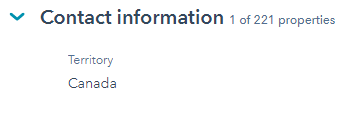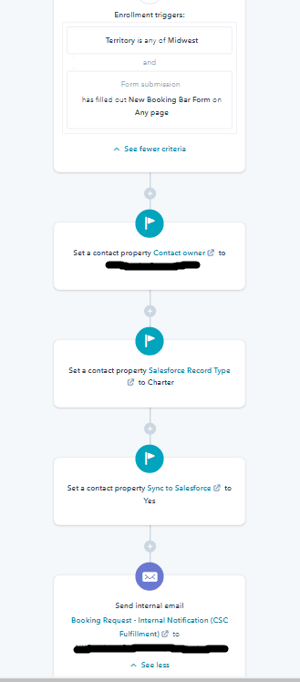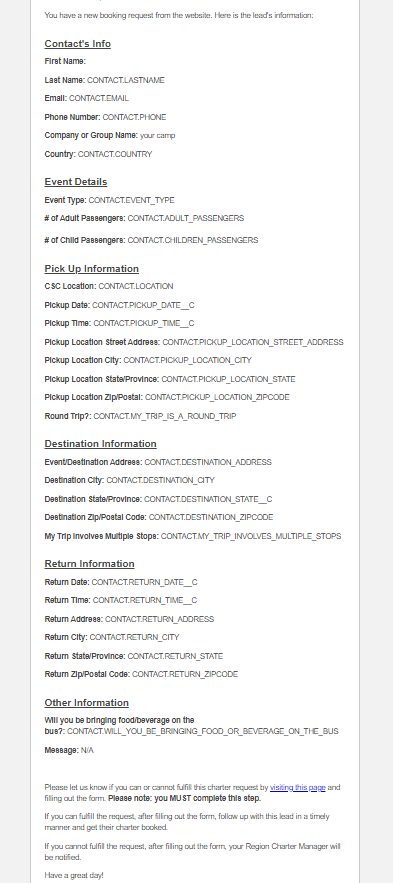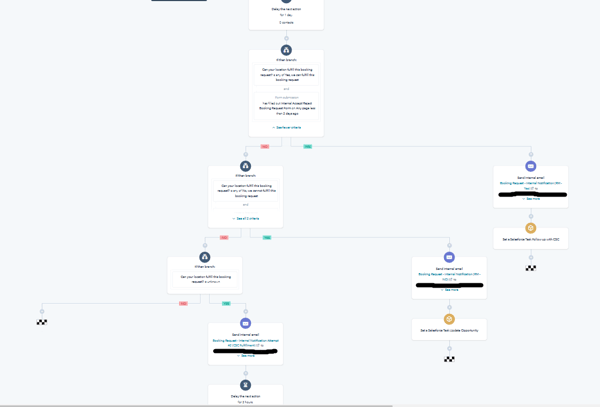Solving a Complex Lead Routing and Marketing Automation Challenge


Companies come to us with unique challenges that require unique solutions every day.
A premier transportation firm that provides customer-focused transportation services, including charter bus trips, bus shuttles and logistics planning for events across the United States and Canada came to us with a complex lead routing and marketing automation challenge that required our sales enablement and marketing teams to partner up and come up with a unique solution to solve for their sales lead management challenge.
Challenge
At Revenue River, we’re all about keeping the end in mind. So knowing the ultimate end goal helps us stay on track and laser-focused on the job to be done with any project.
In this particular instance, which we see with a lot of companies that we work with, the ultimate end goal was to increase visibility and fix the lead routing and handoff process so millions of dollars (I’m not kidding) would stop being left on the table because leads weren’t being followed up with and business was being lost to competitors.
To know whether or not we achieved the ultimate end goal and were successful, we decided to track incoming booking inquiries from the website and, ultimately, how many booking inquiries became closed/won. We also decided to track how many booking leads weren’t followed up with and the average time it took for a lead to be contacted after they made their initial inquiry.
In order to solve this challenge, we first had to figure out how the process was currently working and why it was broken.
Inefficient & Manual Lead Management Processes
The company was broken into 7 regional sales territories that would fulfill charter booking requests based on location and availability. However, leads were emailing a generic email address to inquire about booking a charter and the shared inbox was getting absolutely flooded with inquiries. Nobody was able to sort through the leads and follow up appropriately because they weren’t sure if it fell into their territory or not. And, by the time a lead was followed up with (if ever), it was often past the date they needed the charter for and they had already found an alternate solution. There was no accountability and no organization or visibility.
Another issue was, because people were just directed to contact the generic email address to make an inquiry, the necessary information wasn’t being collected upfront which led to a lot of unnecessary back and forth between the booking team and the prospect.
Very inefficient and very ineffective.
Our Solution
Our sales enablement and marketing teams came up with a solution that combined effective marketing automation with effective sales processes to ultimately solve this challenge.
Here’s what we did.
First, we fixed the way leads entered the system by developing forms on the website that asked for all of the information necessary for the sales team to be able to tell if they could fulfill a booking request upfront.
Next, we needed a way to assign the appropriate territory to a lead based on what location would need to fulfill the request. Even though we typically steer away from using zip codes for lead routing because it can be so complicated, we realized in this particular case we needed to use zip codes instead of states due to the way the system needed to operate.
To make this as streamlined as possible, we created a custom database that we were able to load each charter hub location into (there were over 200 locations to pull from). We could easily name the location, input the address of the location, and label which territory the location fell into.
We then added custom javascript to the forms we built on the website that queried this database every time a booking inquiry was submitted through the form. The query took a look at the zip code of the requested charter pick up and drop off location and then picked the closest charter hub location within a 15-30 mile radius of the request within the database.
Then, the custom coding sent this information back into HubSpot and assigned a sales territory property to the contact record based on the database query.

Using this information, our team set up a series of automated workflows that enrolled contacts based on their sales territory property. Each sales territory had its’ own workflow that would send an internal email to the correct sales territory inbox notifying that team they had a new booking request that needed to be followed up with. Each email notification had all of the information the sales team needed to fulfill the request, which was populated through personalization tokens that pulled the information that was submitted on the form.


Finally, we added branching logic to add an accountability factor to these lead routing workflows. Once the lead was handed over to the booking team, they were sent another email 24 hours later asking them if they could fulfill the request or not. They had to fill out a brief form to let the system know, and if the form wasn’t filled out, after sending a couple of reminders, we added in an escalation point where their manager was notified that they had let a lead slip through and they needed to follow up or hand it over to another location that could fulfill the request instead. This ensured leads weren’t left sitting for too long and would avoid competitors winning the business instead due to timeliness of lead follow-up.

 With this automated system and new processes in place, the team had increased visibility and accountability. Management could rest easy knowing leads were getting automatically handed off and routed through the system once they came in from the website and they would get notified if their team didn’t follow up appropriately. They no longer had to click through every email in a large, cluttered inbox to see if anything came through for them and there was now a place to see a lead’s contact history and paper trail in the CRM – much more efficient than running everything from an email mailbox.
With this automated system and new processes in place, the team had increased visibility and accountability. Management could rest easy knowing leads were getting automatically handed off and routed through the system once they came in from the website and they would get notified if their team didn’t follow up appropriately. They no longer had to click through every email in a large, cluttered inbox to see if anything came through for them and there was now a place to see a lead’s contact history and paper trail in the CRM – much more efficient than running everything from an email mailbox.
The company saw massive results – increase in volume of booking lead requests, increase in volume of bookings, increase in volume of repeat bookings, and an increase in overall charter revenue.
Do you have a complex lead routing and marketing automation challenge that you need to solve, like the charter company described above? If so, we’d love to chat with you!
We love a good challenge, so bring us our next one.
